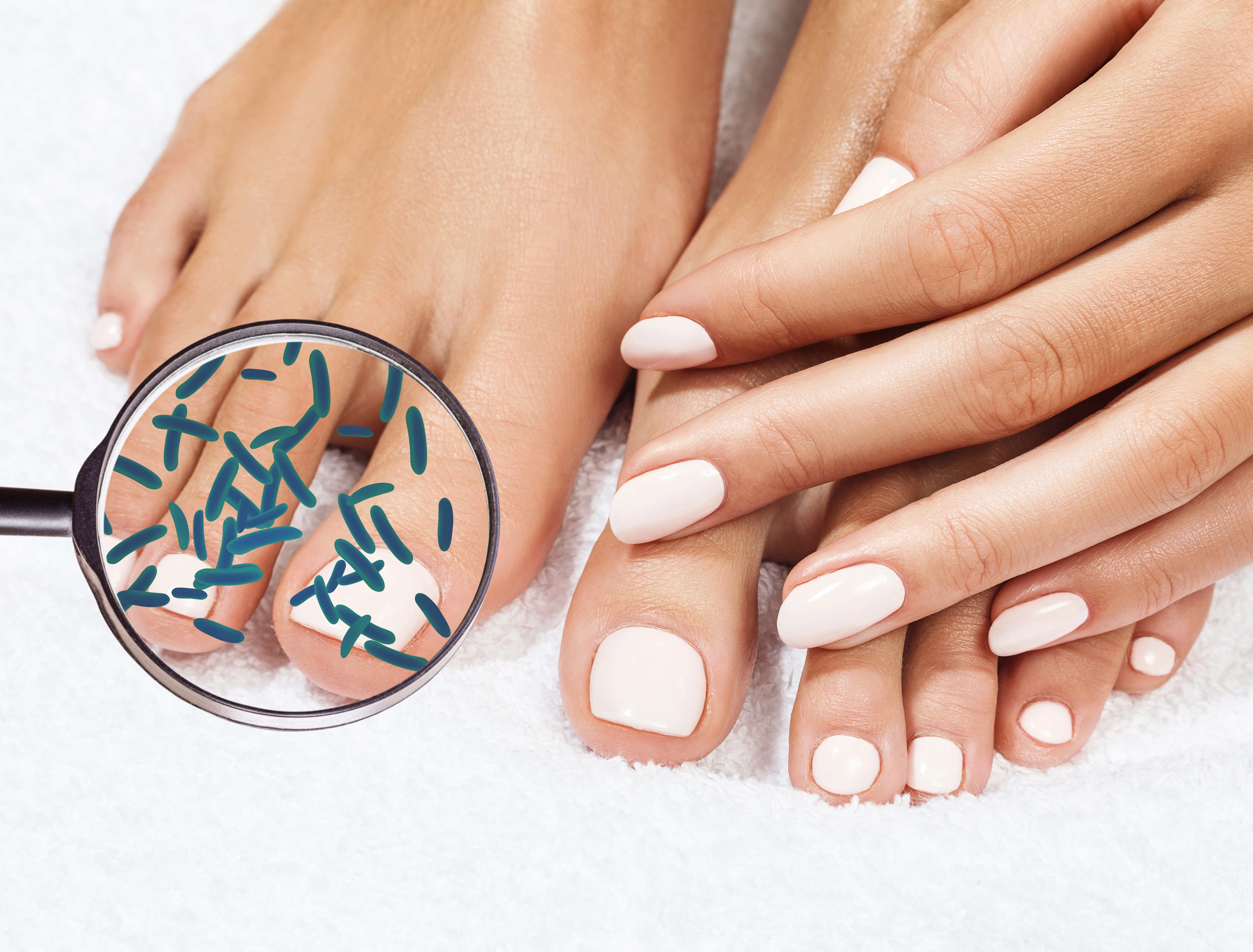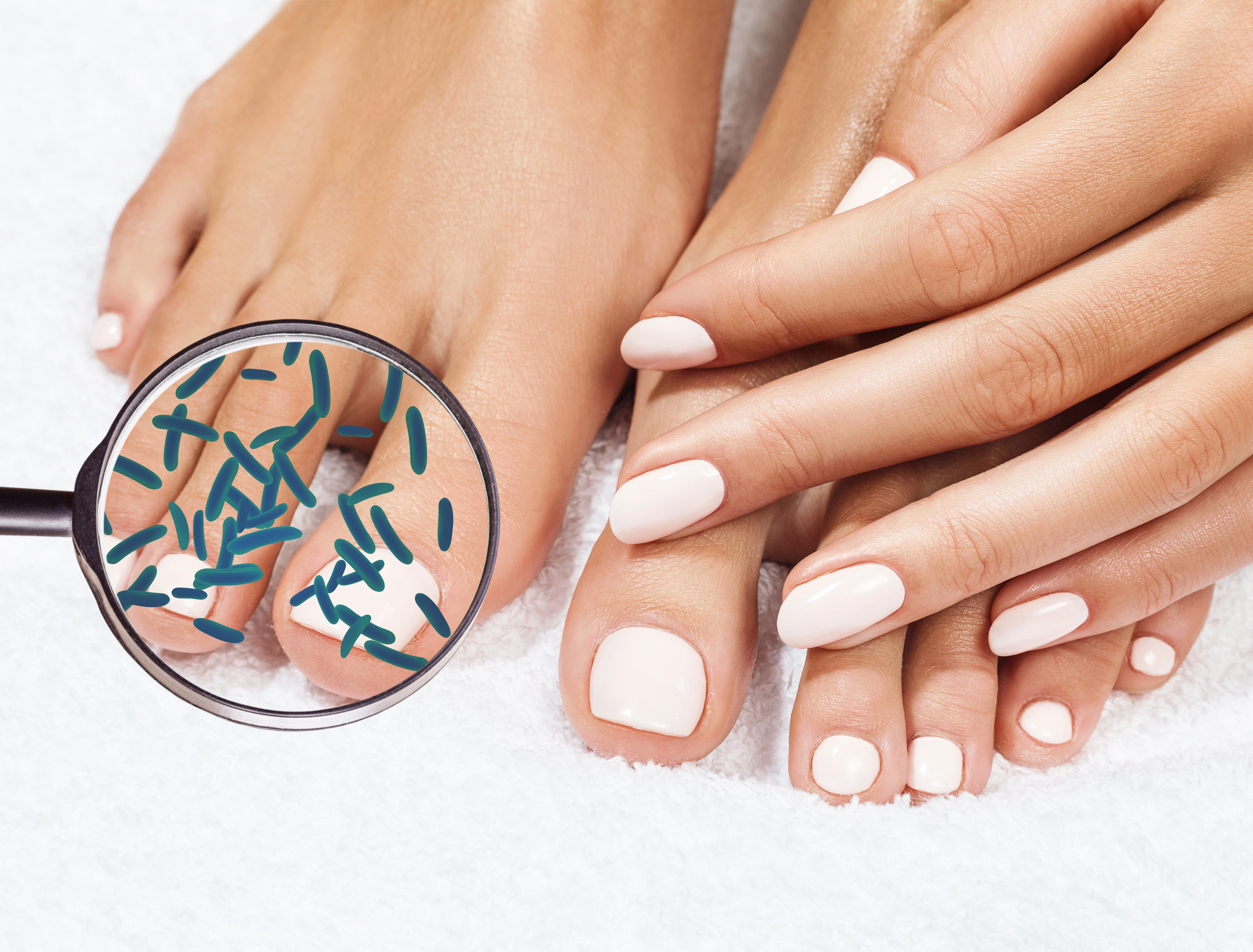Green bacteria on the nail – how to treat It? What is Pseudomonas aeruginosa?


Green bacteria on the nail is indeed a very common problem. It can affect anyone who exposes their nails to damage or does not properly care for their hygiene while styling nails. Unsightly greenish discoloration on the nail plate is a visual imperfection and a serious bacterial infection. What exactly is green bacteria on the nail? How to recognize and treat it? How do you distinguish green bacteria from nail fungus? You are about to find out everything!
- What is green bacteria on the nail and where does it come from?
- Symptoms of Pseudomonas Aeruginosa. How to Recognize the Infection?
- How to distinguish green bacteria from nail fungus?
- How to treat green bacteria on the nail?
- What after the treatment? How to prevent re-infection?
What is green bacteria on the nail and where does it come from?
The green bacteria on the nail is medically known as Pseudomonas aeruginosa, also called blue pus bacillus or green nail syndrome. It is a microorganism that manifests as characteristic green discoloration on the nail plate.
Where does It occur?
The natural environments of this bacterium include soil, water (e.g. tap water), and humid environments such as public pools or bathrooms. Interestingly, Pseudomonas aeruginosa also naturally occurs on the human body, for example, in the groin area, anus, and armpits. Therefore, it is easy to conclude that infection with this bacterium is not difficult.
Causes of Bacterial Infection
The most common reason for Pseudomonas aeruginosa bacteria to get onto the nail is micro-damage that occurs during a manicure service. This is particularly common if the nail technician uses inadequately sterilized tools or applies products or decorations with brushes that have not been disinfected.
Another cause may be the lifting of a hybrid, gel, or acrylic manicure. The conditions under the nail provide an environment that is perfect for the rapid multiplication of various types of bacteria due to the presence of moisture, warm temperature, and dirt.
Green nail syndrome can also occur due to the nail plate detaching from the nail bed and improper hand hygiene.
Check: Focus on Salon revolution - 3 devices and accessories for a manicure salon
Symptoms of Pseudomonas Aeruginosa. How to Recognize the Infection?
The first symptoms of infection with Pseudomonas aeruginosa are typically visual – greenish or possibly bluish discoloration appearing on the nail plate. Among other, slightly later symptoms, we can mention an unpleasant odor coming from under the nail, swelling, and even pain around the infected areas.
If the bacteria are not treated quickly enough, further complications can occur, the most common of which is the detachment of the nail from the nail bed.
How to distinguish green bacteria from nail fungus?
Green bacteria are often mistaken for nail fungus. Are there ways to distinguish them on your own? What should you pay attention to ensure certainty?
- Color of discolorations:
- Green bacteria: characterized by green-blue discoloration of the nail plate, caused by pigments produced by the Pseudomonas aeruginosa bacteria, such as pyocyanin and pyoverdine.
- Nail fungus: discolorations initially have a white hue, and over time become yellowish or brown.
- Nail structure:
- Green bacteria: discolorations are its main symptom, usually without significant changes in the nail structure.
- Nail fungus: causes thickening of the nail plate, which can become wavy, brittle, and prone to breaking.
- Pain symptoms:
- Green bacteria: usually does not cause pain, although extensive changes may result in redness and swelling of the periungual folds.
- Nail fungus: generally does not cause pain either but can lead to discomfort related to structural changes in the nail.
- Complications:
- Green bacteria: can be a risk factor for developing nail fungus if not treated properly.
- Nail fungus: structural changes can lead to permanent damage to the nail if medical treatment is not taken.
To be 100% sure about the accuracy of the diagnosis, we should consult our problem with a specialist - a dermatologist or podologist.
How do you treat green bacteria on the nail?
Green bacteria will not disappear independently, so we should immediately start treating the problem upon discovery and diagnosis. Neglecting bacterial changes usually results in unpleasant consequences, mainly the development of other ailments. How Should the Treatment of Pseudomonas Aeruginosa Proceed?
Firstly, all nail products must be removed. Treating bacterial infection does not allow for nail styling. We should let the nail plate rest from hybrid, gel, or acrylic and stop visiting the salon during the treatment period.
After removing the remnants of the manicure, it is essential to visit a dermatologist or podiatrist. The specialist will professionally clean the change and, if necessary, implement treatment tailored to your needs. This will most often involve antibiotics in the form of external preparations or oral antibiotics.
During treatment, you should pay special attention to proper hand and nail hygiene. Simple steps can ensure faster results in battling the infection. Wash your hands regularly – even more frequently than usual and try to keep your nails dry.
What after the treatment? How to prevent re-infection?
Preventing re-infection with Pseudomonas aeruginosa involves following a few simple principles that are highly effective in protecting our nails. Firstly, always keep your hands and nails clean and dry. If you are prone to such bacterial infections, avoid humid environments.
When going to a beauty salon for a manicure, choose a clean place, where tools and accessories are always sterilized. When painting nails at home, regularly check your nail polish collection and discard old, expired products, as these are ideal environments for bacterial growth.
Observe your nails between stylings and give them a break if you notice any damage or general weakening of their condition. You can also invest in antibacterial care products, such as cuticle oils.
If you want to take special care of the condition of your nails while not giving up beautiful, colorful styles as a manicure fan, consider hypoallergenic, very gentle formulations. You can successfully apply soPRO hybrid nail polishes by Silcare to sensitive nail plates. Vegan formulas and innovative HEMA-free formulations are a blessing for allergy sufferers and all demanding clients!

